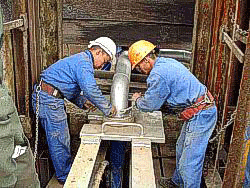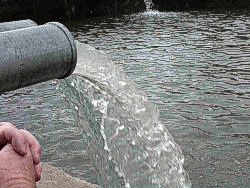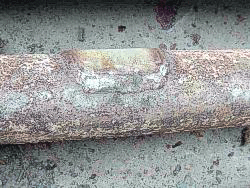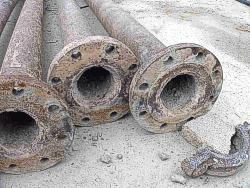Completed Project: African copper mine water supply
Mines are known for their rugged, harsh and unforgiving environments. At the same time they are under pressure to continually strive for best practices and run the non-stop activity of mining and processing.
As the manufacturers of Boreline®, we know that the cost of downtime is immeasurable and has to be avoided at all costs.
We had received details from an African copper mine that had to secure a constant supply of water for part of their processing plant which they had upgraded at great capital expense. If the water supply to the ore processing plant was interrupted millions were lost for every day the plant did not operate.
From the photos below, the breakdown of the steel pipes is very evident. Internal failure and scaling resulted in reduced flow while external breakdown continued un-abated… and these lengths had been in operation for less than 6 months!!
After the first failure of the standard steel riser it was also established that in this aggressive environment the 94 kW (124 Hp) motor needed to be serviced regularly to remove the scale build up. Below is a picture of a smaller motor that had failed in the same environment within 8 months. The build-up of scale on the motor reduced its ability to dissipate the heat and it eventually would burn out even with an inducer sleeve in place.
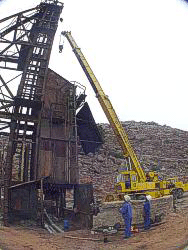
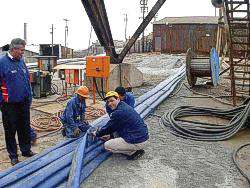
Boreline® has an integrated cable rib system designed to support the power cable along the entire length of the hose. In the photo, Peter Bauer is assisting with technical support and providing instruction on this installation.
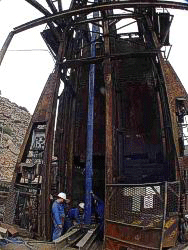
In this manner, the entire length was lowered into position in less than 4 hours. This represents a major achievement considering it took four times as long to remove the rigid section, with twice as many people.
